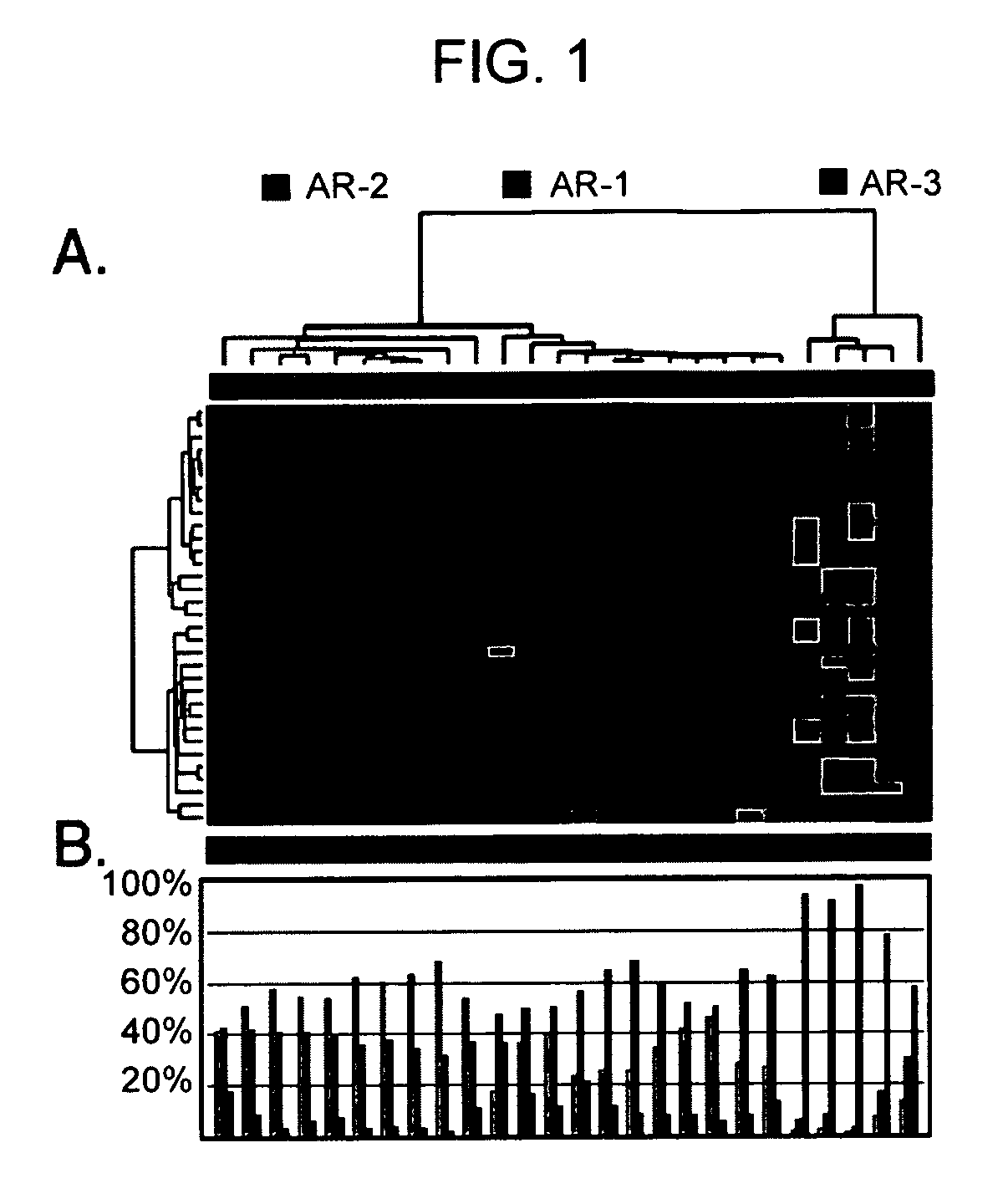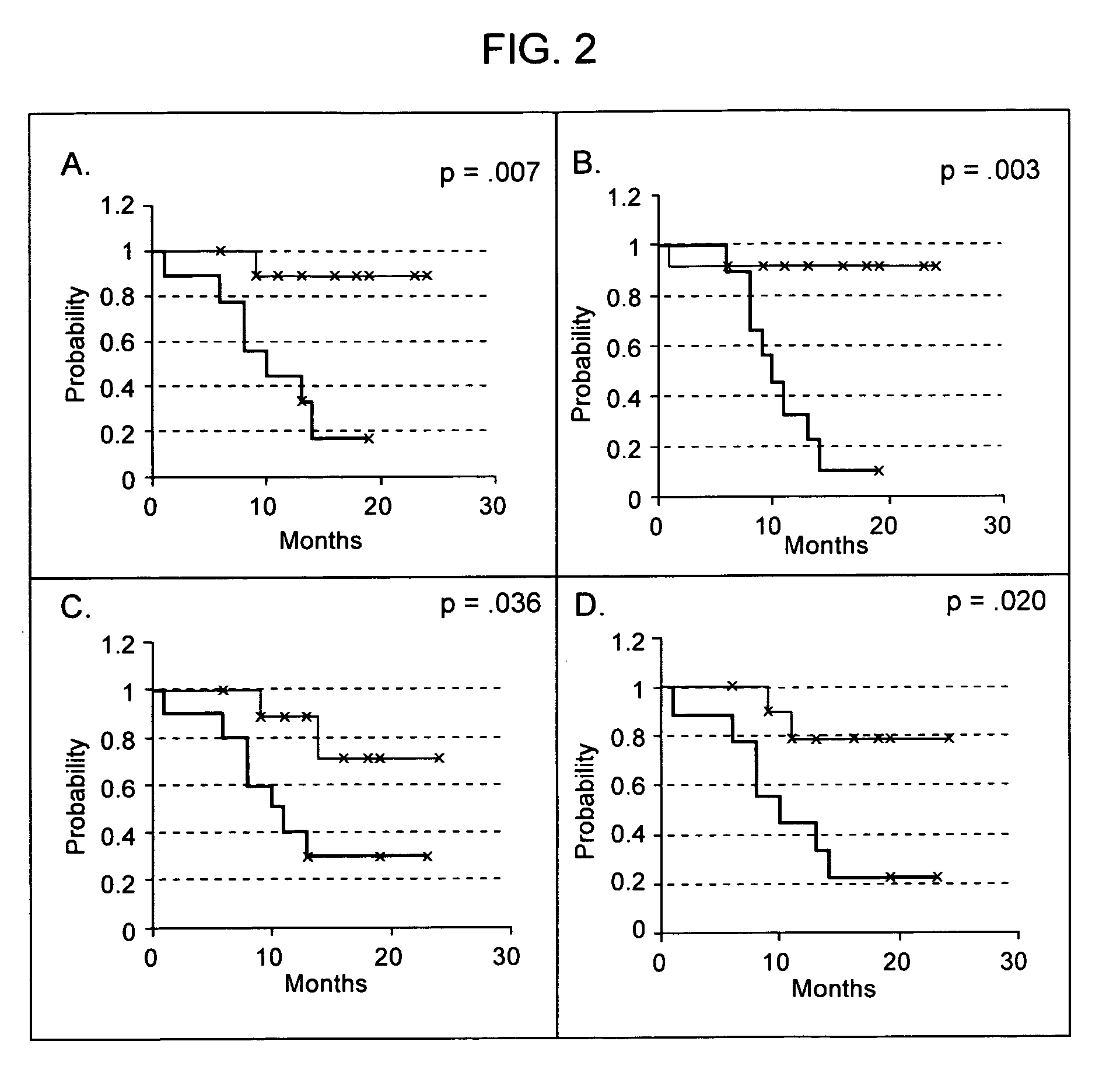Methods and compositions for evaluating graft survival in a solid organ transplant recipient
omposition technology, applied in the field of methods and compositions for evaluating graft survival in a solid organ transplant recipient, can solve the problems of thrombosis and vascular occlusion, loss of allografts, and lysis of targeted cells
- Summary
- Abstract
- Description
- Claims
- Application Information
AI Technical Summary
Benefits of technology
Problems solved by technology
Method used
Image
Examples
Embodiment Construction
[0031] Methods are provided for evaluating a subject for graft function, e.g., in terms of predicting graft survival, identifying the presence of a deleterious graft condition, such as CAN and DT, identifying the severity and class of acute rejection, etc, in a subject are provided. In practicing the subject methods, the expression of at least one gene in a sample from the subject, e.g., a blood or biopsy sample, is assayed, e.g., at the nucleic acid and / or protein level, to evaluate the subject. Also provided are compositions, systems and kits that find use in practicing the subject methods. The methods and compositions find use in a variety of applications.
[0032] Before the present invention is described in greater detail, it is to be understood that this invention is not limited to particular embodiments described, as such may vary. It is also to be understood that the terminology used herein is for the purpose of describing particular embodiments only, and is not intended to be...
PUM
| Property | Measurement | Unit |
|---|---|---|
| Volume | aaaaa | aaaaa |
| Length | aaaaa | aaaaa |
| Luminous flux | aaaaa | aaaaa |
Abstract
Description
Claims
Application Information
 Login to View More
Login to View More - R&D
- Intellectual Property
- Life Sciences
- Materials
- Tech Scout
- Unparalleled Data Quality
- Higher Quality Content
- 60% Fewer Hallucinations
Browse by: Latest US Patents, China's latest patents, Technical Efficacy Thesaurus, Application Domain, Technology Topic, Popular Technical Reports.
© 2025 PatSnap. All rights reserved.Legal|Privacy policy|Modern Slavery Act Transparency Statement|Sitemap|About US| Contact US: help@patsnap.com



